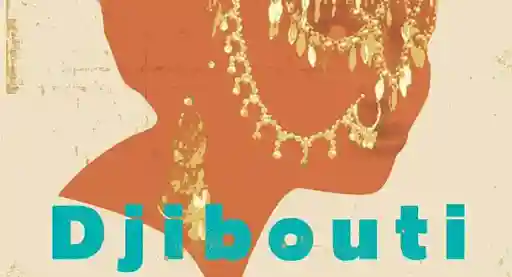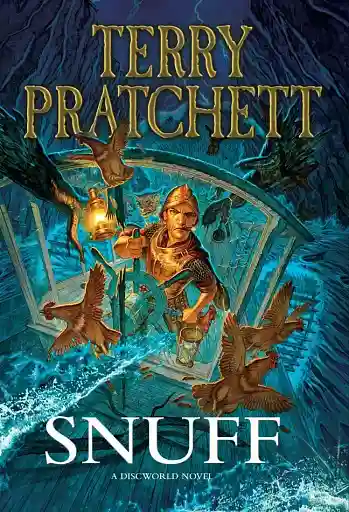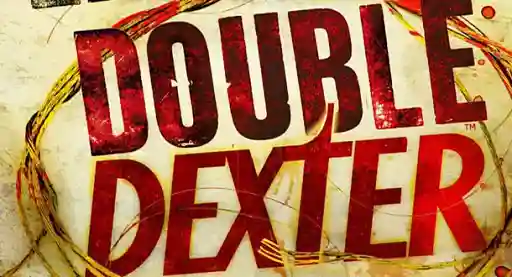I’ve been a fan Stephen King since I was in high school, and I’ve somehow managed to read every book he’s ever written. Being he's one of the most prolific authors ever, that’s no small feat. His latest tome is 11/22/63, an 849-page novel about time travel and the assassination of John F. Kennedy. Hooked already, aren’t you?
But wait, there's more. I'm sure you've heard of the butterfly effect—how traveling back in time affects the future, and every small thing you do can cause a multitude of ripples in the pond we call life. And you’ve probably heard of Occam’s razor as well—that when confronted by a complicated problem, the solution is quite often the most simple and straightforward one available. Start with those two concepts, apply them to the moment in time when JFK is killed, add in the complexities of going back to the 1950s, repeatedly, to try and change the future, mix with a dash of nostalgia and a sprinkling of heartbreak, and you have the latest epic novel by Stephen King.
There are some who say that King is a windbag, unable to edit his own fiction, his thousand page novels overdone and bogged down in the minutiae. I am not one of those people. King has never been called a lyrical author—he’s no Cormac McCarthy. And to that I say, “Thank God.” It would be unbearable. King’s works are blue-collar prose, pedestrian at times, or maybe utilitarian is a better word. But that’s what makes it easy to swallow. He states the facts, tells you what’s going to happen, and then shows it to you. His books may have twists and turns, but for the most part, you can see where things are going, even if the ending isn’t always what you expected. He accomplishes this by doing a number of things well—hammering home a catchphrase, providing layered details of time and place, and by creating likable characters that you find yourself rooting for, often shedding tears for.
King happens to be a big music fan, so often during his longer novels, you’ll find a musical influence—everything from Bob Dylan to Bruce Springsteen to Blue Oyster Cult. In addition to using lyrics as epigraphs, he uses them as messages, scattered throughout the narrative. He also uses phrases like lyrics. One of the "choruses" he repeats throughout this novel is “Life turns on a dime.” It’s something he says over and over, keeping the reader in tune to the fact that things are going to keep changing, so keep your eye on the ball as the cups shuffle around— because things are not always what they seem. He also talks about how “the past is obdurate” (had to look that one up, it means stubborn), and that message echoes throughout the book. He talks about harmony as well, or what I might call synchronicity. We cling to these three threads as we jump back and forth between the 1950s and present day 2011, trying to change events, unsure of how these actions will affect the future. Because life is chaos, the past is stubborn to change, and there is a certain harmony in the universe.
The novel starts with our protagonist, Jake Epping, being shown a hole in the universe that can send him back in time. It exists in the storeroom of a dying restaurant owner named Al Templeton, who explains to him the rules. Jake is immediately transported back in time (and as the reader, we’re quick to buy this bit of science fiction) to the same when and where that Al has been visiting, over and over, in an attempt to change the future. But there is still information to be shared between the two. After a short visit to the 1950s, Jake learns more:
“’How long was I gone?’
‘Two minutes. I told you, it’s always two minutes. No matter how long you stay.’ He coughed, spat into a fresh wad of napkins, and folded them away in his pocket. ‘And when you go down the steps, it’s always 11:58 A.M. on the morning of September ninth, 1958. Every trip is the first trip.’”
Early on we are told how it works and it makes sense for some reason. Much later in the novel we get a bit more of the technical information, how and why these “bubbles” exist, but it really isn’t that important. You’re in, or you’re not. And it’s so much easier to be in.
King does a good job of showing us the sensations as well, what it feels like to step through this opening and be taken back in time. This from Jake:
“You know how, on a bright day, you can close your eyes and see an afterimage of whatever you were just looking at? It was like that. When I blinked—either a millisecond before or a millisecond after my eyes closed, I couldn’t tell which—I caught a glimpse of my foot on a step. And it wasn’t in the dim light of a sixty-watt bulb, either. It was in bright sunshine.”
And this:
“…and all at once there was a pop inside my head, exactly like the kind you hear when you’re in an airplane and the pressure changes suddenly. The dark field inside my eyelids turned red, and there was warmth on my skin. It was sunlight. No question about it. And that faint sulfurous smell had grown thicker, moving up the olfactory scale from barely there to actively unpleasant. There was no question about that either.“
Within the first fifty pages of the novel, King has sold us on time travel, on this idea of going into the past to change future events. Our willing suspension of disbelief intact, it’s back to 1958, to see what Jake can do.
Another one of King's many talents is his ability to find all of the millions of little details that make his stories so vivid and believable. This story is mostly set in Derry, Maine (with some ghosts from past novels, and even a few clowns haunting the pages), a staple in his work. King likes his small towns (Derry, Castle Rock, Jerusalem’s Lot) and he does them well—everything from the locals, to the weather, to the elements of nature that encroach on the narratives. But he also has a knack for certain time periods. He is able to capture the attitude of the 1950s, with language that nods back and says “Hi-ho, Daddy-O,” and a bevy of beautiful cars, such as a ’58 Chevy, “the kind with the bodacious gull-wing tailfins.” He works in the music of the fifties, the way that money is different, and important events of the time are not ignored. He fuses in sporting events (in this novel, Jake makes a few bets, in order to keep his stash of cash sturdy), clothing, and the mannerisms of the 1950s. And he doesn’t avoid the racial implications of the day either, quick to show how people spoke and acted, and what they believed.
Stephen King is often called a horror writer, but I don’t know if that label is really accurate anymore. I wouldn’t have called his last novel, Under the Dome, a horror novel, nor would I call 11/22/63 horrific. But, there are certainly moments in this story where the macabre, the darkness, seeps through. Jake is speaking about Al in the final throes of cancer:
“Here in the privacy of his own home, he wasn’t using tissues, handkerchiefs, or napkins to deal with that cough; there was a box of maxi pads on the table beside the chair.”
A gruesome image, the visual of an old man coughing, choking, and spitting up his own blood, and maxi pads only make it more vulgar. King does not shy away from violence in this book (or sex, which is something he usually does avoid) and instead shows us the brutality of war and Hiroshima, the way that a knife can slice open a face, or the graphic results of a gunshot wound to the head. But it’s a small part of the book. It's always present, lurking, but is in the background most of the time.
Jake spends time in Derry in the 50s as a substitute teacher. After meeting one of his students back in 2011- a man who saw his family murdered when he was just a boy- he decides to try and save the kid, the entire family, from a drunken, violent dad with a hammer in his hand. But the past is obdurate, as King says. History doesn’t want to be changed, it seems, so the tension that King layers over his narrative is that of danger popping up at every turn, thugs in waiting, trees toppling over, car tires blowing, at the most inopportune times, of course. Jake fails to accomplish exactly what he wants the first time, so he heads back to 2011, and prepares to try again, this time going after Lee Harvey Oswald, in an attempt to save JFK from assassination. This time he’ll have to stay in the past for five long years. And a lot can happen in five years. People can fall in love. People can die.
King creates an ongoing sense of tension in 11/22/63, partly because we know where this story is going. We know that eventually, somehow, no matter how many times Jake “resets” the current day by coming back to 2011, at some point in time, he’ll have to go after Oswald. And what about the events that came after Oswald, the other assassinations? These are part of the story, too. Here is Al talking to Jake before he goes back for the main mission, to stop Lee Harvey Oswald:
“‘…this matters, Jake. As far as I’m concerned, it matters more than anything else. If you ever wanted to change the world, this is your chance. Save Kennedy, save his brother. Save Martin Luther King. Stop the race riots. Stop Vietnam, maybe.’ He leaned forward. ‘Get rid of one wretched waif, buddy, and you could save millions of lives.”
And part of what King does so effectively in 11/22/63 is that he creates characters that we care about. He drops Jake into a world long before cell phones and the internet, where everyone you pass on the sidewalk says “Howdy,” and if you have a flat tire it won’t be long before someone passes by to offer you a hand, a lift, and maybe a place to stay. Jake becomes George Amberson, and eventually ends up in Jodie, Texas (POP. 1280), between Dallas and Forth Worth, hunting down Lee Harvey Oswald. But before he spends his time in Texas, he camps out in Derry, meeting colorful local people like Deke Simmons, tall, bald and in his sixties, retired and mourning the death of his wife Mimi. And there is Ellen Dockerty, acting principal of Derry High, suspicious academic, but true friend as well. And most importantly, the tall drink of water that is Sadie Dunning, a slightly awkward but simple beauty, that has her own dark past to elude. King is able to make us care about his cast of locals, and as the tension increases, and the story unravels, I found myself tearing up a few times, the loss of a character a stunning blow, the saving of a historic icon a touching and welcome relief. Over these 800 pages he finds a way to make you care, even about Oswald, his wife Marina, and their daughter, June.
But don’t think I’m giving this story away—the ending you may think is obvious, well, it’s not an ending at all. Bringing us back to 2011, Jake shows us how the butterfly effect has changed the world, and maybe it isn’t for the better.
It’s difficult to judge any book by Stephen King, because as a reader with a long personal history with the man, the author, and the teacher, I’m always pulling for him. Much like I pull for his characters. So part of me always wants him to succeed. Maybe I view his work through rose-colored glasses at times. Or maybe I’ve just gotten used to his voice. I always compare his latest book to his old ones, so there is that context to consider as well. Where does 11/22/63 fall in comparison to his dozens of other novels? It is similar to Under the Dome in size, scope and narrative, but without the deus ex machina ending. It’s more satisfying. It is also similar to Duma Key, as far as his current voice, but not nearly as dark and disturbing. My favorite novels of his are The Stand, The Shining, It, The Dark Tower series, The Dead Zone, and The Long Walk. Those are all home runs to me, some of them grand slams. In the context of the body of his work, I’d say this is a solid triple off the wall, and as a long time fan of the Red Sox, I think King would be happy with that definition. It’s an expansive historical fiction that plays around with a bit of science and fantasy, but it is ultimately a touching love story, a moving alternate history that makes us stop and think about our past and the fate of certain destinies, and the future that waits for us all—just over the blood red horizon.
Get 11/22/63 at Bookshop or Amazon

About the author
Richard Thomas is the award-winning author of seven books: three novels—Disintegration and Breaker (Penguin Random House Alibi), as well as Transubstantiate (Otherworld Publications); three short story collections—Staring into the Abyss (Kraken Press), Herniated Roots (Snubnose Press), and Tribulations (Cemetery Dance); and one novella in The Soul Standard (Dzanc Books). With over 140 stories published, his credits include The Best Horror of the Year (Volume Eleven), Cemetery Dance (twice), Behold!: Oddities, Curiosities and Undefinable Wonders (Bram Stoker winner), PANK, storySouth, Gargoyle, Weird Fiction Review, Midwestern Gothic, Gutted: Beautiful Horror Stories, Qualia Nous, Chiral Mad (numbers 2-4), and Shivers VI (with Stephen King and Peter Straub). He has won contests at ChiZine and One Buck Horror, has received five Pushcart Prize nominations, and has been long-listed for Best Horror of the Year six times. He was also the editor of four anthologies: The New Black and Exigencies (Dark House Press), The Lineup: 20 Provocative Women Writers (Black Lawrence Press) and Burnt Tongues (Medallion Press) with Chuck Palahniuk. He has been nominated for the Bram Stoker, Shirley Jackson, and Thriller awards. In his spare time he is a columnist at Lit Reactor and Editor-in-Chief at Gamut Magazine. His agent is Paula Munier at Talcott Notch. For more information visit www.whatdoesnotkillme.com.







